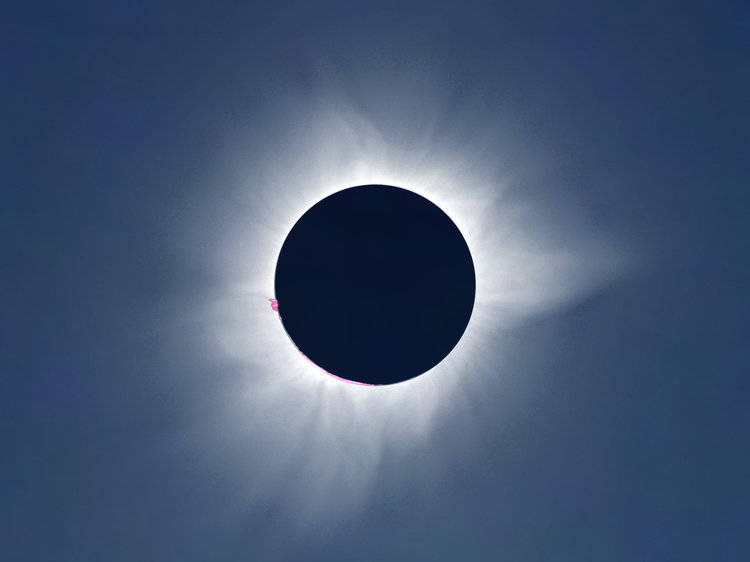Putting to rest myths associated with solar eclipse

On Aug. 21, the moon will pass between the Earth and the sun, throwing a wide swath of the United States into darkness.
And guess what? It’s all going to be OK. Your eyes won’t shrivel, your skin won’t burn. A plague of locusts won’t descend on the planet. The ground won’t open up and swallow everything whole. After a couple of minutes, the moon will move on and the world will be as it has always been — and perhaps we will be a bit more appreciative of the beauty of the cosmos.
There are some things you do need to do to prepare for this total solar eclipse, but there are also things you don’t need to worry about. Like the apocalypse.
So backed by scientific fact, let’s debunk some of the most persistent myths and misconceptions circulating in the run-up to the big event.
Myth: It is dangerous to watch the eclipse.
Fact: It is perfectly safe to watch the eclipse, so long as you follow the right protocols (and use common sense). Wear protective glasses whenever you’re observing the sun — from the beginning of the eclipse, throughout the partial phase and up to the moment of totality. If and only if you are in the path of totality, it’s OK to take your glasses off once the moon has completely covered the sun. But make sure to put those glasses back on before the sun re-emerges.
You probably have heard a lot of warnings about the dangers of observing an eclipse, and it’s good to be aware of what safety measures you need to take. But there is nothing inherently dangerous about this event — don’t let fear stop you from witnessing it!
Myth: Pets/infants/people not watching the eclipse need to wear protective glasses.
Fact: You need to wear special glasses only if you’re trying to look directly at the sun. That’s because our eyes are not built to handle the intense radiation from the sun straight on. To observe the sun directly, as you’ll want to do if you’re trying to watch the eclipse, you must wear powerful protective glasses that filter out 99 percent of the sun’s rays.
But Fido, your newborn and folks who plan on just going about business as usual during the eclipse are not going to be staring at the sun. They don’t need to wear protective glasses any more than you would need to on an ordinary day. In fact, it would be really hard to walk around wearing eclipse glasses full time; the lenses block so much light that you basically wouldn’t be able to see anything.
Myth: The sun emits harmful radiation during the eclipse.
Fact: Because there have been so many strongly worded warnings about the hazards of watching the eclipse, some folks worry that there’s something dangerous about the sun itself at this time. Others have heard that eclipses are associated with particularly harmful radiation that can poison food or cause birth defects. And astrologers have been saying that eclipses are associated with chaos, disruption, violence — you name it.
These claims have no scientific basis, though, and there’s nothing particularly dangerous about the sunlight during an eclipse. It’s the same sun we always enjoy, the one that lights our days, fuels our plants and makes our planet habitable, but momentarily just stuck behind the moon. The situation is analogous to a cloud passing in front of the sun, only in this case, the cloud is made of rock and is floating 240,000 miles above the ground. The light you see during totality — when the moon completely covers the main part of the sun and makes it possible to see the sun’s outer atmosphere, called the corona — is a little eerie and sometimes has a greenish tinge.
You don’t need to cover your windows, hide indoors or protect your unborn children from the light. You just need to make sure that anyone watching the event takes the appropriate measures to protect their eyes.
Myth: It’s a doomsday omen.
Fact: For most of time, most cultures have associated eclipses with disaster. How can you blame them? Before the advent of modern astronomy, humans had no way of knowing that the momentary disappearance of the sun was simply the result of the sun, moon and Earth aligning periodically while moving through the cosmos as they should. So they came up with other explanations: ravenous demons, vengeful gods, the arrival of the apocalypse.
We’ll leave demons and gods to other experts. But from a scientific perspective, an eclipse is cause for wonder, not fear. This is a moment when the motion of the celestial bodies is revealed to us — a reminder that we live on a spinning sphere, orbited by a reflective rock, circling around a supportive star. If Earth didn’t have a moon, and if relative sizes of the sun and moon weren’t just right, we wouldn’t experience eclipses at all. So marvel at it. Revel in it. Be glad that, of all the billions of planets in the universe, this is the one you get to call home.